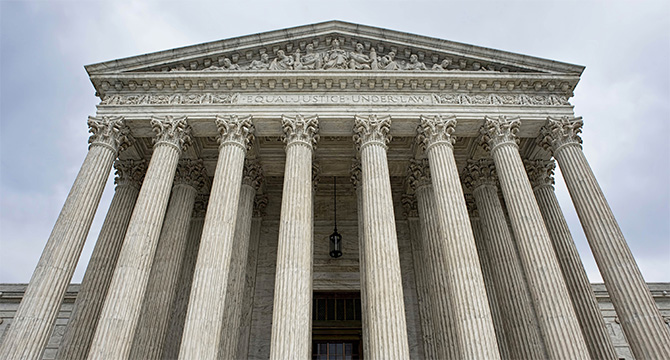SCOTUS Raises an Interesting Question for Appeals in Consolidated Cases in Wisconsin

The U.S. Supreme Court today decided unanimously that, when cases are consolidated under Fed. R. Civ. P. 42(a), they nevertheless remain separate cases. In Hall v. Hall, No. 16-1150, two separate cases had been consolidated and were tried together to a jury, but the district court granted a new trial in one of the cases and entered a final judgment in the other. After the losing party in the decided case took an appeal, the Court of Appeals for the Third Circuit held that, because of the consolidation, the judgment appealed from was not a “final decision” under 28 U.S.C. § 1291. It dismissed the appeal for lack of jurisdiction.
In an opinion by Chief Justice Roberts, the Supreme Court reviewed the history of consolidation in federal practice, beginning with a statute enacted in 1813, which remained in effect in some form until replaced by Rule 42(a) in 1937. It concluded from the cases interpreting the statute that consolidation was not intended to effect a merger of the consolidated cases. Relying largely on that history to determine the meaning of the undefined word “consolidate” in the rule (“the court may . . . consolidate the actions”), the Court decided that consolidated cases are not merged into a single action and that a party aggrieved by the judgment entered in one of the cases may appeal, although there will be further proceedings in the other case. And, indeed, though the issue did not arise in Hall, failure to take a timely appeal from the judgment would preclude taking an appeal from that judgment later, when the “rest of the case” comes to an end.
One question that Hall raises for Wisconsin practitioners is whether our courts would come to the same conclusion with respect to cases consolidated under our rule, Wis. Stat. § 805.05(1)(a). Like § 1291, Wis. Stat. § 808.03(1) limits appeals of right to “final” judgments or orders that “dispose[] of the entire matter in litigation.” [Unlike the federal statute, our rule permits/requires appeal from an order or judgment that disposes of the entire matter “as to one or more of the parties,” but a consolidation situation like that in Hall may well not meet that exception.] Our rule likewise does not define “consolidate,” and, even though much of its language is taken from Rule 42(a), our rule, too, was adopted after over 100 years of practice under prior statutes. Accordingly, it remains to be seen whether a final judgment or order in a case consolidated with another which continues in the circuit court may/must be appealed within the time prescribed under Wis. Stat. § 808.04(1). Prudence would suggest, however, that an aggrieved litigant should assume that Wisconsin will follow Hall and take a timely appeal from the first judgment entered.
